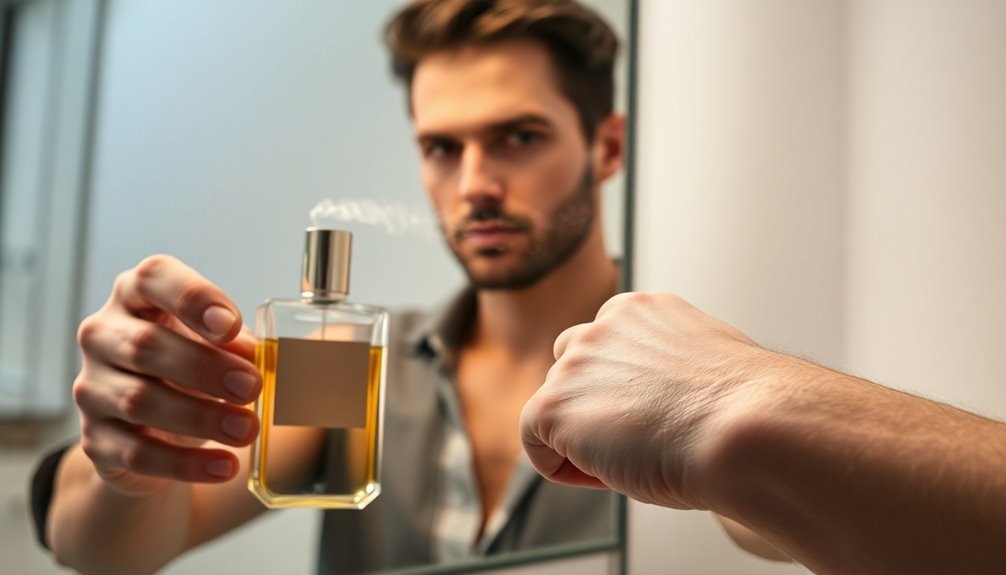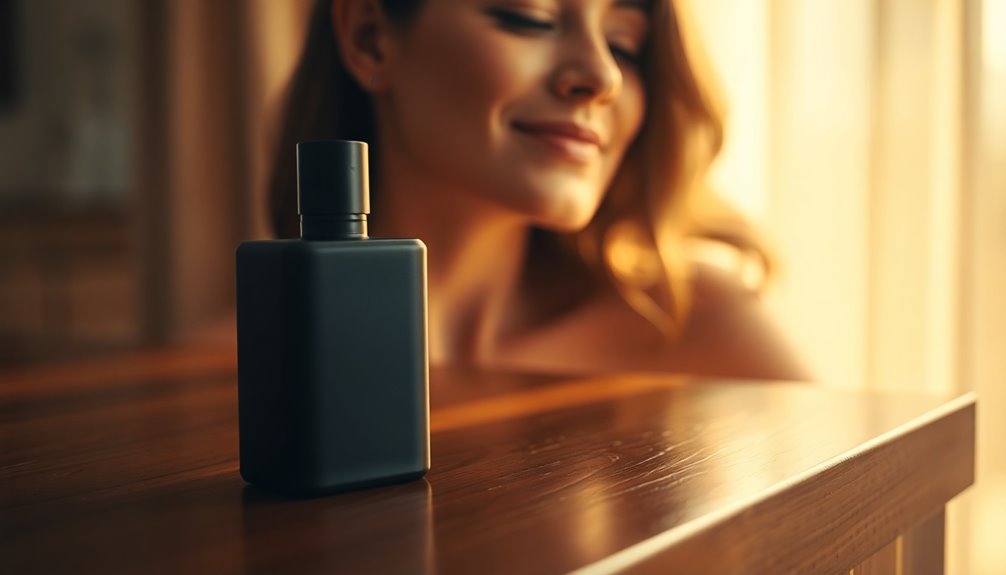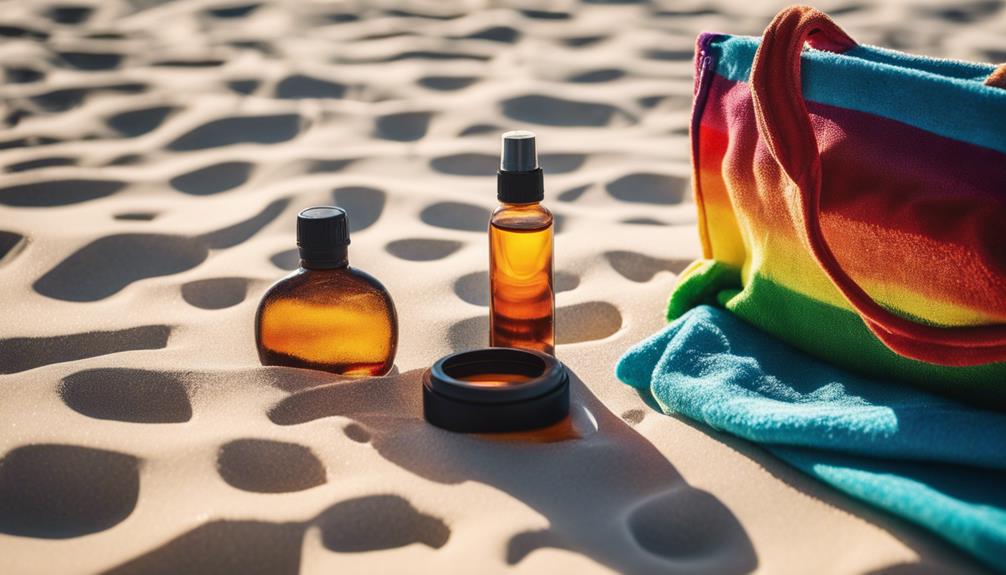To establish a successful skincare regimen, begin by cleansing your face twice a day to eliminate dirt and impurities. Then, apply a toner to restore pH balance and improve absorption. Exfoliate 2-3 times per week to enhance skin texture. Follow up with specific treatments or serums for targeted concerns. Moisturize to keep your skin hydrated, and remember to apply sunscreen daily for protection against UV damage. Customize your products based on your skin type for optimal results. Stay committed to your routine for continuous improvement, and soon you will uncover valuable tips for achieving glowing skin.
Key Takeaways
- Begin with cleansing to remove impurities, using a gentle cleanser suited for your skin type, twice daily.
- Follow cleansing with toning to restore pH balance and enhance absorption of subsequent products.
- Apply targeted treatments or serums to address specific skin concerns, using proper application techniques for maximum efficacy.
- Moisturize on slightly damp skin to lock in hydration, selecting a product based on your skin type.
Understanding Skincare Basics
To maintain healthy skin, you need to understand the basics of an extensive skincare routine, which includes cleansing, toning, and moisturizing.
Cleansing is the first step, and it's vital for removing dirt, oil, and impurities that can clog your pores and lead to breakouts. You should cleanse your face twice daily, using products that suit your specific skin type, whether you have oily, dry, or combination skin.
Next comes toning, which helps restore your skin's pH balance after cleansing. This step enhances the absorption of the following products, making it essential for effective skincare. Toners can vary, so choose one that complements your skin type for best results.
Importance of Consistency

Consistency in your skincare routine is key to achieving and maintaining healthy, radiant skin. When you commit to a daily skincare routine, you're not just applying products; you're actively promoting your skin health. It typically takes at least six weeks of consistent application to see significant improvements in skin texture and appearance.
Here's how consistency impacts your skincare journey:
| Aspect | Importance | Result |
|---|---|---|
| Consistent Application | Builds tolerance and effectiveness | Enhanced product efficacy |
| Daily Routine | Guarantees no essential steps are missed | Better management of skin concerns |
| Track Skin Responses | Helps adapt to changing needs | Tailored solutions for your skin |
Step-by-Step Cleansing
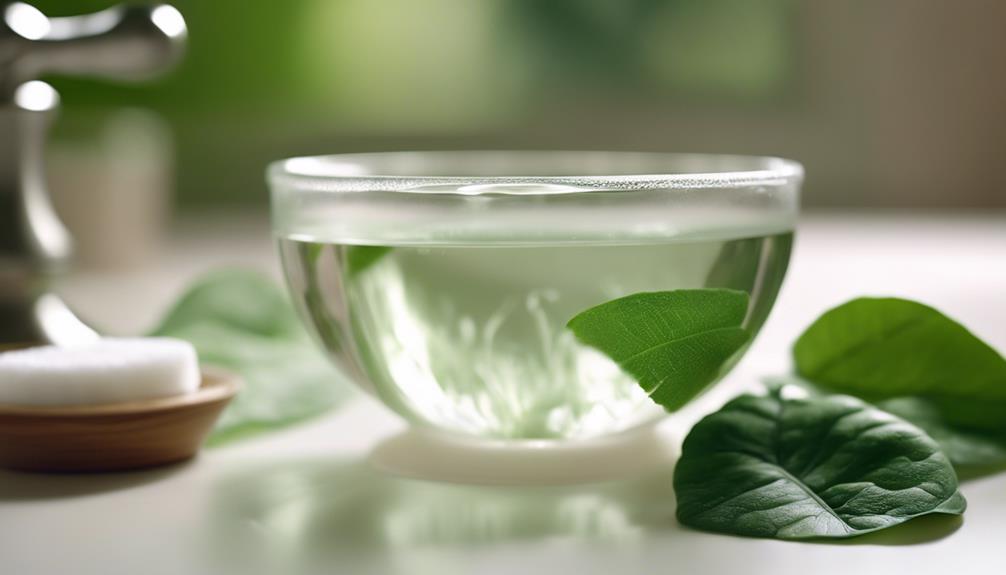
A proper cleansing routine is essential for keeping your skin clear and healthy. Start by choosing a gentle cleanser that suits your skin type—gel cleansers work well for oily skin, while cream cleansers are better for dry skin. Cleansing should be done twice daily, so rinse your face with lukewarm water to open up your pores, making the cleanser more effective.
Next, apply the cleanser in a circular motion, especially on areas prone to oil buildup like the T-zone. This guarantees you thoroughly cleanse your skin without causing irritation. After massaging the cleanser in, rinse your face well with lukewarm water to remove all residue, preventing clogged pores and breakouts.
If you wear heavy makeup or sunscreen, consider using a double cleansing method. Start with an oil-based cleanser to dissolve makeup, followed by your gentle foaming cleanser to guarantee all impurities are removed. This two-step process effectively removes makeup and leaves your skin feeling fresh and clean.
Stick to this routine consistently, and you'll notice a significant improvement in your skin's clarity and overall health.
Exfoliation Techniques
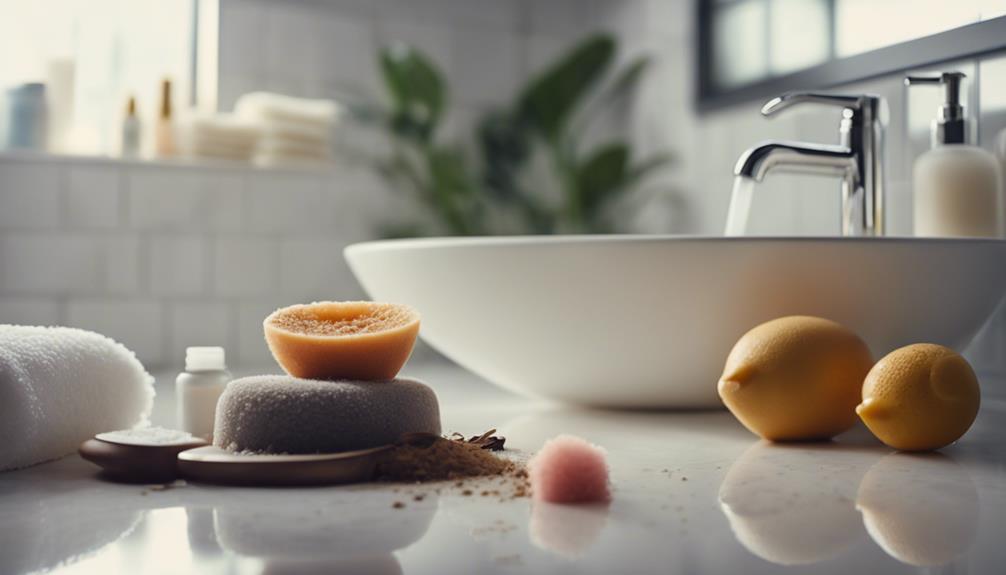
How can you effectively incorporate exfoliation into your skincare routine for smoother, healthier skin? Start by choosing between physical and chemical exfoliation. Physical exfoliation uses scrubs to manually slough off dead skin cells, while chemical exfoliation employs acids like AHAs and BHAs to dissolve them.
It's essential to tailor your exfoliation frequency to your skin type. If you have oily skin, you might exfoliate 2-3 times a week, but if you have sensitive skin, stick to once a week to prevent irritation. Over-exfoliating can lead to redness and a compromised skin barrier, so always listen to your skin.
Here's a quick comparison to help you choose:
| Type of Exfoliation | Benefits | Best For |
|---|---|---|
| Physical | Instant smoothness | Normal to oily skin |
| Chemical | Improved texture and pigmentation | Oily, acne-prone skin |
| Gentle on the skin | Sensitive skin (with caution) |
Incorporating exfoliation into your routine enhances the effectiveness of other skincare products, allowing them to penetrate deeper and work better. Remember, a little goes a long way!
Toning: Benefits and Application
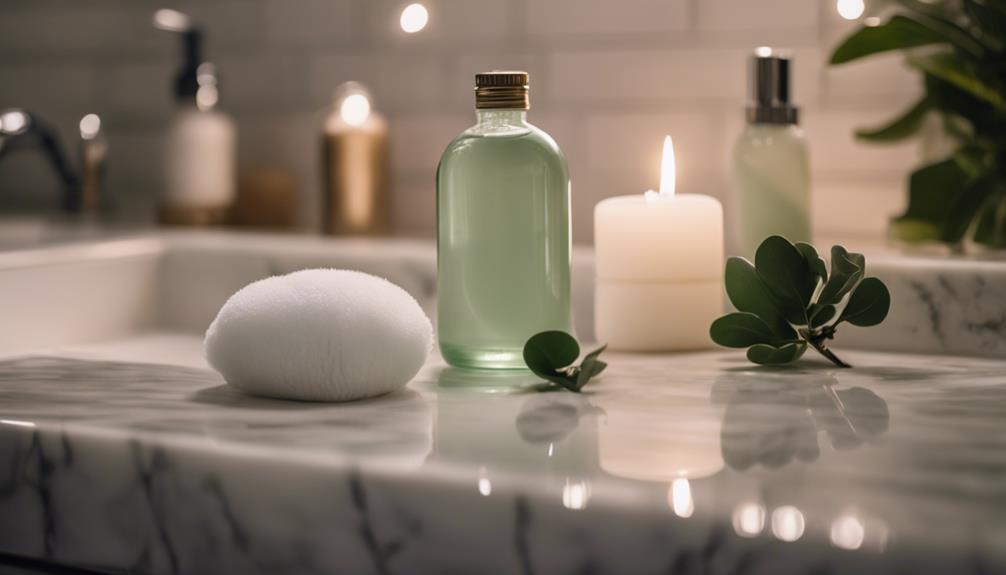
Toning's a vital step in your skincare routine that helps restore your skin's pH balance after cleansing.
By doing this, you enhance product absorption, making your serums and moisturizers more effective.
Plus, it sets the stage for healthier, more radiant skin.
Ph Balance Restoration
Restoring your skin's natural pH balance is essential for maintaining a healthy barrier, and using a toner can effectively achieve that goal. Toners help bring your skin back to its ideal pH level, typically around 5.5, preventing issues like dryness and irritation.
An alcohol-free toner is particularly beneficial, as it hydrates and soothes without stripping away essential oils, making it suitable for all skin types, especially sensitive ones.
When you apply toner after cleansing, you prepare your skin for better hydration and enhance the effectiveness of your next skincare steps. Many toners contain humectants such as glycerin or hyaluronic acid, which attract moisture to your skin, helping to maintain hydration levels throughout the day. This added moisture is vital for keeping your skin plump and healthy.
Consider incorporating toners with gentle exfoliating ingredients like AHAs or BHAs as well. They not only help refine your skin texture but can also minimize the appearance of pores and fine lines.
Enhanced Product Absorption
By incorporating a toner into your skincare routine, you greatly boost the absorption of subsequent products, ensuring they work more effectively on your skin. A toner helps restore your skin's pH balance after cleansing, which is vital for enhanced product absorption. Hydrating toners, especially those containing humectants, can considerably improve moisture retention, allowing active ingredients in serums and moisturizers to penetrate deeper.
When applying toner, you can use a cotton pad or your hands for even distribution. This method enhances the effectiveness of your skincare products. It's important to choose alcohol-free toners to prevent dryness and irritation, particularly if you have sensitive or dehydrated skin. Regular use of toner can lead to a smoother texture and a more radiant complexion over time.
Here's a quick look at the benefits of using toner:
| Benefit | Description |
|---|---|
| Enhanced Product Absorption | Boosts the effectiveness of other products |
| Moisture Retention | Helps keep skin hydrated |
| pH Balance Restoration | Restores skin's natural balance |
| Active Ingredients Penetration | Improves absorption of key ingredients |
| Alcohol-Free | Prevents dryness and irritation |
Targeted Treatments and Serums

When it comes to targeted treatments and serums, understanding key active ingredients is essential for addressing your specific skin concerns.
You'll want to master the right application techniques to maximize their effectiveness.
Let's explore how you can optimize your skincare routine with these powerful formulations.
Key Active Ingredients
Understanding key active ingredients in targeted treatments and serums can transform your skincare routine, helping you achieve healthier, more radiant skin.
Retinoids are powerful vitamin A derivatives that boost cell turnover and collagen production. They're fantastic for reducing fine lines and improving skin texture, but remember to use them at night to avoid sun sensitivity.
Vitamin C is another hero ingredient; it brightens your complexion and evens out skin tone while protecting against environmental damage. Look for serums with L-ascorbic acid for maximum effectiveness.
If hydration is your goal, hyaluronic acid is essential. This ingredient can hold up to 1,000 times its weight in water, ensuring your skin stays plump and moisturized, especially if you have dry skin.
For those battling acne, salicylic acid is indispensable. This beta hydroxy acid penetrates deep into pores, helping to exfoliate and prevent breakouts, making it ideal for oily or acne-prone skin.
Application Techniques
Applying targeted treatments and serums correctly can maximize the benefits of key active ingredients, guaranteeing your skincare routine delivers noticeable results.
Start with a clean, toned face to enhance absorption. Use a pea-sized amount of serum for your entire face. Apply it with gentle tapping motions using your fingertips, which helps in even distribution and reduces irritation.
When addressing specific concerns, like blemishes or dark spots, target those areas directly. Keep your skin slightly damp during application to increase penetration. This technique guarantees the ingredients work effectively where you need them most.
Allow each layer of product to absorb fully before proceeding to the next step in your skincare routine—this typically takes about 1-2 minutes.
For best results, consider incorporating active ingredients like retinol or vitamin C at night, while opting for hydrating serums containing hyaluronic acid in the morning. This strategy helps maintain moisture levels throughout the day while guaranteeing your targeted treatments are most effective.
Moisturizing Strategies
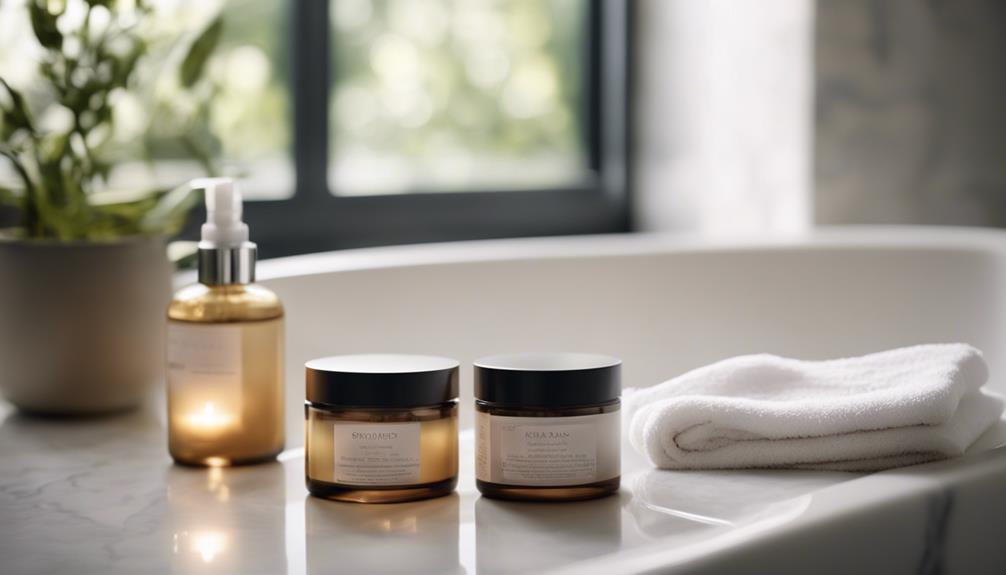
Moisturizing your skin consistently is key to keeping it hydrated and healthy throughout the day. To guarantee you're getting the most out of your moisturizer, apply it while your skin is still slightly damp after cleansing or toning. This enhances absorption and maximizes the effectiveness of hydrating ingredients.
Choosing the right moisturizer for your skin type is crucial. Here's a quick guide to help you:
| Skin Type | Recommended Moisturizer |
|---|---|
| Oily Skin | Lightweight, oil-free gels |
| Dry Skin | Rich creams with ceramides |
| Combination Skin | Balancing lotions |
Incorporate ingredients like hyaluronic acid for intense hydration and glycerin to draw moisture from the environment. Don't forget to regularly reapply your moisturizer, especially in dry climates or during winter months. This will help maintain your skin barrier and prevent moisture loss throughout the day. By understanding your skin type and the importance of effective hydration, you can achieve a radiant, healthy complexion.
Sun Protection Essentials
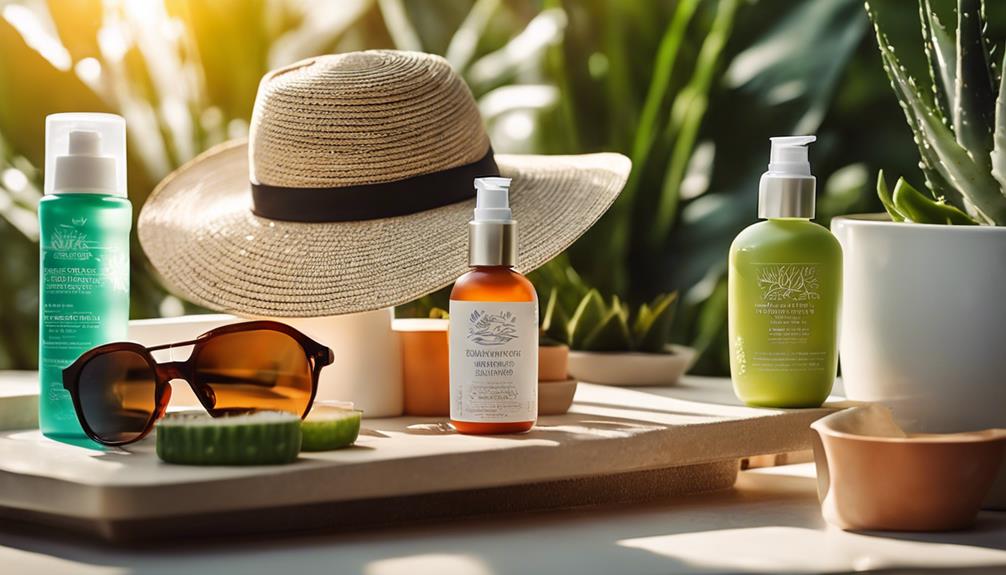
When it comes to protecting your skin, daily sunscreen is non-negotiable.
You need to know the different types of sun protection available and how to apply them effectively for the best results.
Let's explore why incorporating sunscreen into your routine is essential for long-term skin health.
Importance of Daily Sunscreen
Daily sunscreen is essential for protecting your skin from harmful UV rays that can lead to serious issues like skin cancer and premature aging. Applying a broad-spectrum sunscreen with an SPF of 30 or higher is vital, as it effectively blocks both UVA and UVB rays.
This protection is necessary year-round; remember, up to 80% of UV rays can penetrate clouds, so even on overcast days, you need to apply sunscreen.
For ideal protection, use about a shot glass full of sunscreen for full-body coverage and reapply every two hours when you're outdoors. Studies show that consistent daily use of sunscreen can reduce your risk of developing skin cancer by up to 50% and help prevent photoaging signs like wrinkles and sunspots.
Incorporating a moisturizer with SPF into your skincare routine can simplify this step, ensuring you're protected while keeping your skin hydrated.
Don't underestimate the importance of daily sunscreen; it's a simple yet powerful way to maintain healthy skin and reduce long-term damage. Make it a non-negotiable part of your morning routine, and your future self will thank you.
Types of Sun Protection
Understanding the different types of sun protection is vital for effectively safeguarding your skin against harmful UV rays.
First, look for sunscreen labeled with broad-spectrum protection. This guarantees you're shielded from both UVA rays, which cause premature aging, and UVB rays, responsible for sunburn.
Choose a sunscreen with an SPF rating of at least 30 for daily use, which blocks about 97% of UVB rays. While higher SPF values offer slightly more protection, don't rely on them alone.
If you plan on swimming or sweating, opt for water-resistant formulations that maintain effectiveness for 40 or 80 minutes.
It's important to apply at least one ounce of sunscreen—about a shot glass full—to cover your entire body. Reapply every two hours or more frequently if you're in the water or sweating.
Finally, always check the expiration dates on your sunscreen products. Using expired sunscreen can lead to sun damage, as its effectiveness diminishes over time.
Prioritize fresh, broad-spectrum sunscreen for best skin safety, and make it a non-negotiable step in your skincare routine.
Application Techniques for Effectiveness
Applying sunscreen correctly is crucial for maximizing its effectiveness in protecting your skin from harmful UV rays.
Start your morning skincare routine by choosing a broad-spectrum sunscreen with an SPF of 30 or higher. This guarantees you're shielded from both UVA and UVB rays, providing ideal skin safety.
Use about a nickel-sized amount for your face and a shot glass-sized amount for your body. Generously apply the sunscreen, making sure to cover all exposed areas evenly. Pay special attention to your ears, neck, and any other areas often overlooked; this helps prevent UV damage.
Remember to reapply sunscreen every two hours, especially if you're swimming or sweating. This consistent application is key to maintaining effective protection throughout the day. If you know you'll be in the water, opt for a water-resistant formula to provide longer-lasting coverage.
Lastly, always make sunscreen the final step in your morning skincare routine. Apply it after your moisturizer and before makeup for maximum effectiveness.
Tailoring Routine to Skin Type
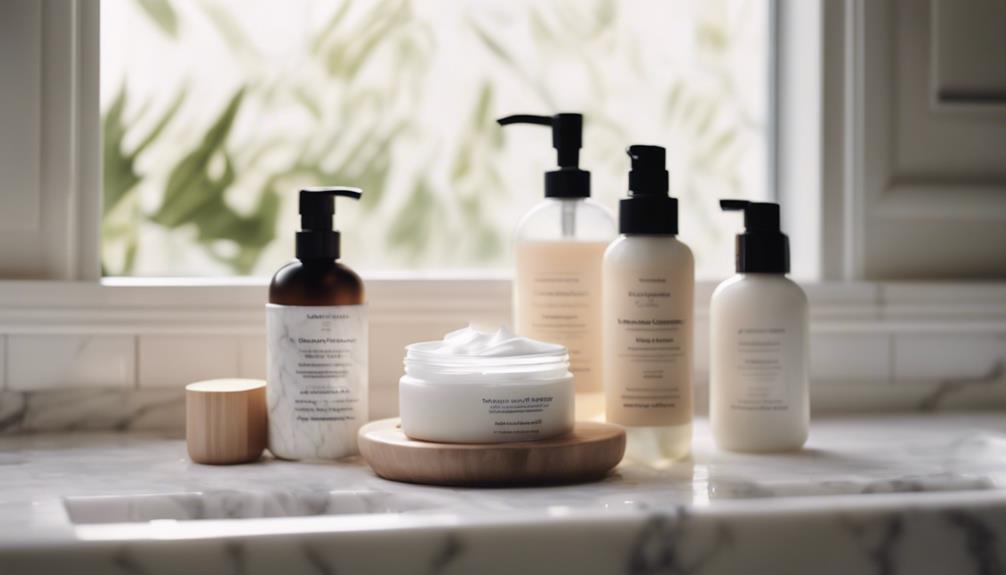
How can you customize your skincare routine to effectively meet the unique needs of your skin type? Understanding your skin type—whether it's oily, dry, sensitive, or acne-prone—is essential for selecting the right products. Here's how you can tailor your routine:
- Oily Skin: Opt for lightweight, oil-free products that control excess sebum and won't clog your pores. Look for gels or foams that cleanse effectively without stripping your skin.
- Dry Skin: Choose rich creams and moisturizers containing hydrating ingredients like ceramides and glycerin. These will help lock in moisture and restore your skin's barrier.
- Sensitive Skin: Prioritize fragrance-free and hypoallergenic products to minimize irritation. Always patch test new items before full application to avoid adverse reactions.
If you have acne-prone skin, incorporate treatments with active ingredients like salicylic acid or benzoyl peroxide to effectively target breakouts and prevent future ones.
Common Misconceptions in Skincare
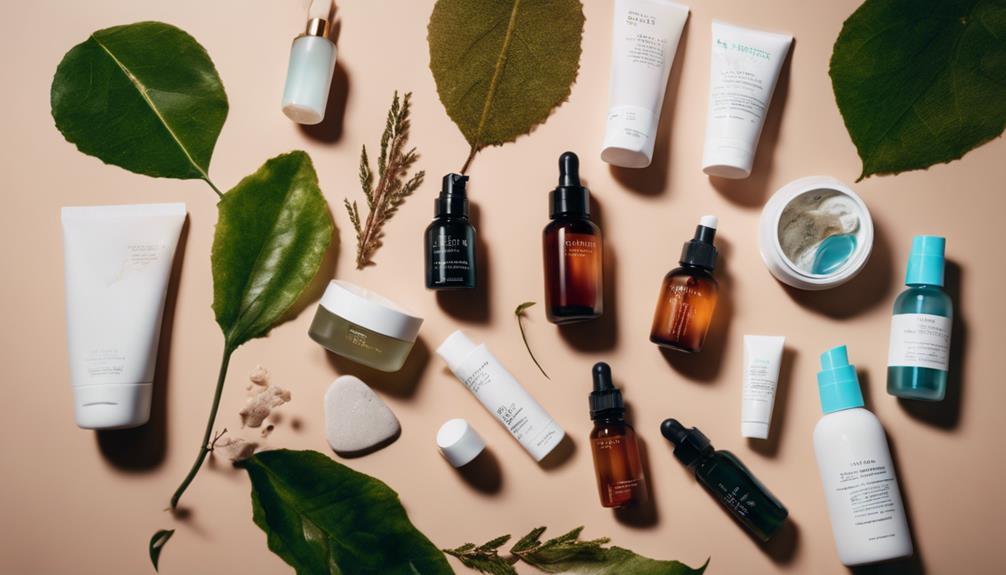
Many people fall victim to common misconceptions in skincare that can hinder their progress toward healthy skin.
For instance, many think oily skin doesn't need moisturizer, but it actually requires hydration to balance oil production. Another myth is that expensive products guarantee better results; the truth is, effectiveness depends more on ingredients and how well they suit your specific skin concerns.
You might also believe that natural products are always safe and effective, but beware—some natural ingredients can irritate or cause allergic reactions. Always test new products, regardless of their origin.
Additionally, some think sunscreen is only necessary on sunny days; however, UV rays can harm your skin even when it's cloudy, making daily sunscreen application essential.
What Are the Detailed Steps in a Face Skincare Routine?
A proper face skincare routine involves several steps to keep your skin healthy and youthful. Some face skincare essentials include cleansing, exfoliating, toning, moisturizing, and applying sunscreen. Each step is crucial in maintaining clear and glowing skin, so make sure to follow a daily routine to achieve the best results.
Conclusion
Incorporating a consistent skincare routine can transform your skin's health and appearance.
Did you know that 80% of skin aging is attributed to sun exposure? By following the steps outlined—cleansing, exfoliating, toning, moisturizing, and protecting—you're not just caring for your skin today; you're investing in its future.
Remember, everyone's skin is unique, so tailor your routine to what works best for you. Stick with it, and you'll see the results in no time!


